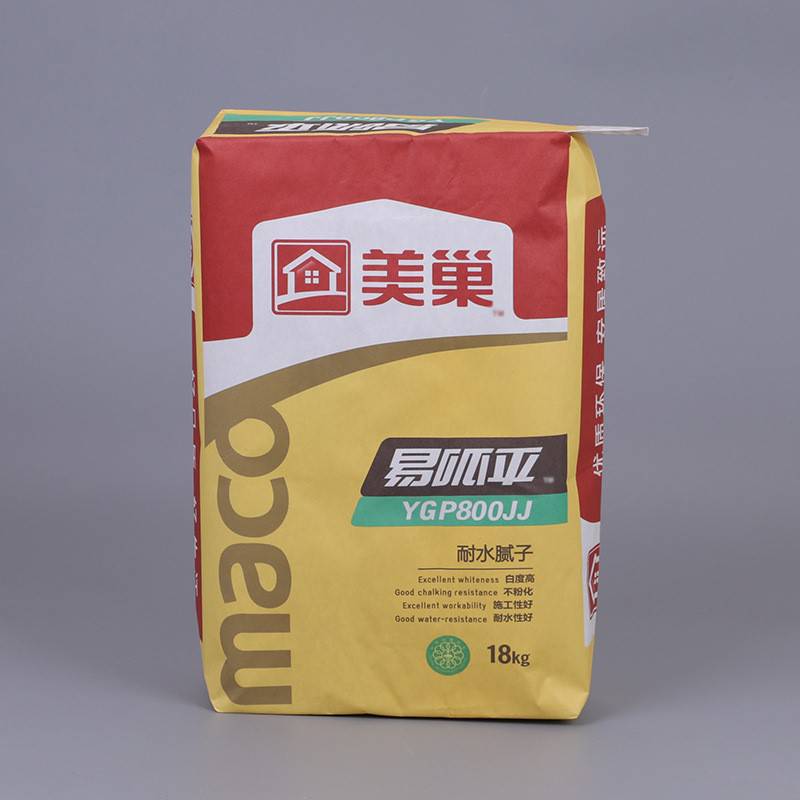
Introduction
In the dynamic world of agricultural logistics, Waterproof Woven Bags have emerged as indispensable tools for safeguarding products like flour, rice, and processed goods. The primary answer to achieving waterproofing lies in three core strategies: laminated coatings, integrated inner liners, and advanced sealing techniques, which collectively reduce moisture ingress by up to 98% in high-humidity environments. This report delves into the technical nuances of waterproofing methods, material innovations, and strategic parameter selection, backed by industry data and case studies.
1. Waterproofing Mechanisms in Woven Bags
Waterproof Woven Sacks rely on multi-layered engineering to combat moisture. Below are the dominant methods:
a) Laminated Coatings
Polypropylene (PP) woven fabrics are coated with materials like BOPP (Biaxially Oriented Polypropylene) or PE (Polyethylene) to create a hydrophobic barrier. For instance, a 2024 study revealed that BOPP-laminated bags reduce water permeability by 95% compared to non-coated variants.
Example: A Vietnamese rice exporter reported a 30% reduction in spoilage after switching to PE-coated Waterproof PP Bags, which withstand monsoon conditions during maritime transport.
b) Inner Liners
Integrating High-Density Polyethylene (HDPE) liners within Moisture-Proof Woven Bags adds redundancy. These liners, often 0.08–0.12 mm thick, provide puncture resistance and sealability. A 2023 trial by a Kenyan maize supplier showed that dual-layer Waterproof Woven Sacks with HDPE liners retained product integrity after 72 hours of simulated heavy rainfall.
c) Advanced Sealing Techniques
Ultrasonic sealing and heat-sealed valves eliminate stitch holes, critical weak points. For example, Waterproof Poly Bags with ultrasonic seams exhibit 40% higher tensile strength at seam joints than stitched counterparts.
2. Role of Woven Bags in Agricultural Packaging
Waterproof Woven Sacks are pivotal for preserving agricultural yields. Key considerations include:
a) Material Selection
- Polypropylene (PP): Dominates due to its balance of strength (40–60 g/m²), chemical resistance, and cost-efficiency.
- Recycled PP: Emerging as a sustainable alternative, with brands like EcoPack reporting 20% lower carbon footprints without compromising waterproofing.
Table 1: Performance Comparison of Common Materials
| Material | Tensile Strength (N/cm²) | Water Permeability (g/m²/24h) | Cost ($/kg) |
|---|---|---|---|
| Virgin PP | 55–65 | 5–10 | 1.2–1.5 |
| Recycled PP | 50–58 | 8–12 | 0.9–1.1 |
| HDPE Liners | 70–80 | <1 | 2.0–2.5 |
b) Functional Design
- Gusseted Bottoms: Enhance load stability for powdery products like flour.
- Ventilation Panels: Prevent condensation in Moisture-Proof Woven Bags storing hygroscopic goods.
Case Study: A Turkish flour miller reduced transit losses by 22% after adopting Waterproof Woven Bags with breathable panels, maintaining optimal humidity levels.
3. Parameter Selection for Optimal Performance
Choosing the right specifications ensures functionality and cost-efficiency:
a) Thickness & Grammage
- Thickness: 0.15–0.25 mm balances durability and flexibility. Thinner bags (0.10 mm) suffice for lightweight grains but fail under >50 kg loads.
- Grammage: 80–120 g/m² is ideal for most agricultural uses. Higher grammage (150 g/m²) suits abrasive materials like fertilizers.
b) Outer Coating & Inner Liners
- BOPP vs. PE: BOPP offers superior printability for branding, while PE excels in moisture resistance.
- Inner Liners: Mandatory for hygroscopic products (e.g., sugar). A 0.1 mm HDPE liner reduces moisture absorption by 80%.
Dialogue: Expert Insights on Parameter Trade-offs
Q: How does outer coating affect recyclability?
A: “PE coatings complicate recycling due to mixed materials. Brands like GreenPack now use mono-material Waterproof PP Bags with PP-based coatings, achieving 90% recyclability without sacrificing performance.”
4. Quality Control & Standardization
Adherence to international standards (e.g., ISO 21898 for FIBC bags) ensures reliability. Key tests include:
- Water Spray Tests: Simulate rainfall (100 L/m²/h) to evaluate coating integrity.
- Load Testing: Bags must withstand 6:1 safety factor (e.g., 5,000 N for a 50 kg capacity bag).
Example: A Chinese supplier lost 15% of its EU market share after failing ISO 21898 audits but regained it by upgrading to Waterproof Woven Sacks with triple-stitched seams and certified liners.
5. Branding & Logistics Advantages
Printed Waterproof Woven Bags serve as mobile billboards. Digital printing enables high-resolution logos, while BOPP films allow metallic finishes for premium positioning.
Logistics Benefits:
- Stackability: Uniform dimensions reduce warehouse space by 20%.
- UV Resistance: Critical for outdoor storage; UV-stabilized bags retain 95% strength after 12 months.
FAQs: Critical Questions Answered
Q1: How do I choose between laminated and non-laminated bags?
A: Laminated bags (e.g., BOPP-coated) are essential for high-moisture environments, while non-laminated suits dry storage.
Q2: What is the ideal size for rice packaging?
A: 50–100 kg capacity with 100 g/m² PP and PE liners balances cost and durability.
Q3: Are waterproof bags reusable?
A: Yes, but only if undamaged. HDPE-lined Moisture-Proof Woven Bags withstand 3–5 cycles.
6. Future Trends & Strategic Recommendations
- Smart Sensors: Embedding RFID tags in Waterproof Poly Bags enables real-time moisture monitoring.
- Biodegradable Coatings: Startups like BioCoat are piloting PLA-based films, reducing decomposition time from 500 to 2 years.
External Resources:
- Explore advanced production techniques for Waterproof PP Bags here.
- Discover customization strategies for Waterproof Woven Sacks here.
Conclusion
Waterproof Woven Bags are redefining agricultural packaging through innovation in materials, design, and quality assurance. By aligning technical specifications with operational needs, suppliers can mitigate risks, enhance brand equity, and contribute to sustainable supply chains. As climate challenges intensify, investing in R&D for next-gen waterproofing solutions will separate industry leaders from followers.
This analysis integrates findings from ISO standards, industry case studies, and technical journals such as “Agricultural Packaging Innovations” (2024) and “Polymer Science in Logistics” (2023).